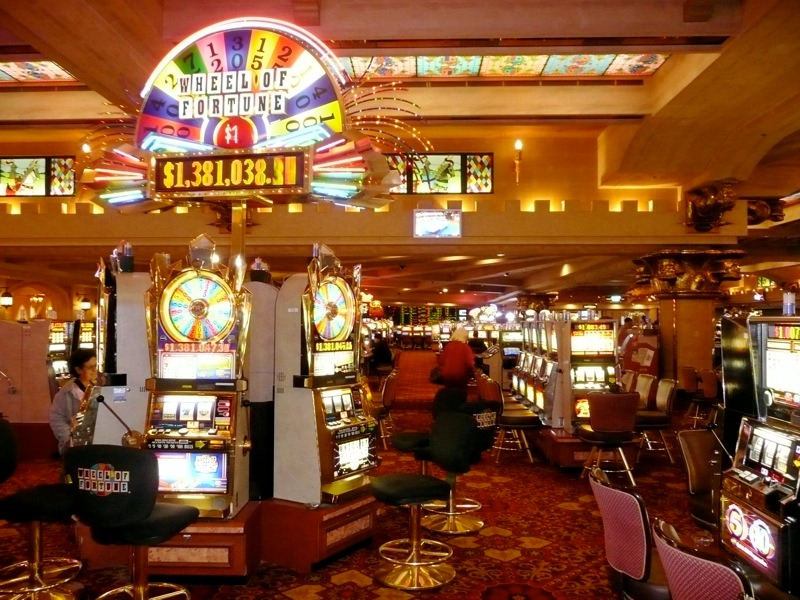Las Vegas today shines brightly with extravagant resort complexes and dazzling lights, symbolizing its status as the global epicenter of online casino entertainment. Yet, this renowned city was once nothing more than a modest town, radically transformed by a thriving gambling industry. Since the inauguration of its first casino in 1906, Las Vegas has continuously evolved, expanding dramatically into a bustling metropolis home to nearly three million residents.
Over the decades, numerous casinos have risen and fallen, each leaving an indelible mark that continues to define Sin City’s vibrant character. Although many iconic establishments no longer exist, their historical footprints remain integral to the city’s culture and identity.
Las Vegas originated in May 1905 as a modest railroad town, following the sale of 110 acres by the Los Angeles and Salt Lake Railroad Company. Merely a year later, the city’s first casino, Golden Gate Hotel & Casino, welcomed visitors on Fremont Street, offering both accommodation and meals for just one dollar. For the next two decades, Las Vegas remained a tranquil place until pivotal events in 1931 radically transformed its trajectory.
The liberalization of local divorce laws, permitting residency-based divorces, sparked an influx of “divorce tourists.” Additionally, the initiation of the Hoover Dam’s construction brought thousands of workers to the area, fostering the development of entertainment venues and gambling establishments along Fremont Street. Among these early establishments was the Northern Club, notorious for its illicit sale of alcohol during Prohibition and later becoming the first casino licensed to offer legal gambling in 1931.
With the repeal of Prohibition in 1933, Las Vegas experienced an economic boom, attracting organized crime figures eager to capitalize on lucrative gambling and alcohol markets. By 1941, infamous mobster Bugsy Siegel had assumed control of the Northern Club. This period marked a significant shift, as the Mob’s involvement laid foundational elements for the city’s explosive growth.
In 1941, the iconic Las Vegas Strip began with El Rancho Vegas, established by entrepreneur Thomas Hull. Initially conceptualized as a simple motel with gambling amenities, its rapid success inspired further investment along Highway 90. Bugsy Siegel, already influential within Las Vegas circles, took advantage of this opportunity, acquiring El Cortez and later orchestrating the ambitious Flamingo resort project. After forcing his partner Billy Wilkerson out, Siegel oversaw the lavish Flamingo opening in 1946. Although its initial launch faltered, subsequent management transformed it into a lucrative luxury destination, setting a new standard for future resorts.
The success of Flamingo encouraged additional investments, leading to the construction of iconic resorts such as the Frontier and Sands. These venues emphasized extravagant entertainment and high-end gambling experiences, setting Las Vegas apart from other gambling towns. Meanwhile, Benny Binion introduced the Horseshoe Casino on Fremont Street in 1951, distinctively focusing purely on gambling without ancillary attractions. Binion pioneered practices like unlimited maximum bets and complimentary services, significantly influencing contemporary casino culture.
By the mid-1950s, Las Vegas welcomed over eight million visitors annually, drawing global stars such as Frank Sinatra and Elvis Presley. However, the 1970s and 1980s brought economic challenges, as recession and internal corruption led to stagnation. With competition arising from Atlantic City, Las Vegas desperately required rejuvenation.
Enter Steve Wynn, whose visionary Mirage resort debuted in 1989, redefining luxury and ushering in the era of megaresorts. This ambitious, $630 million project sparked a construction boom throughout the 1990s, giving rise to legendary complexes including Treasure Island, MGM Grand, Luxor, Bellagio, and Venetian. These resorts prioritized affordable luxury and family-oriented experiences, significantly diversifying Las Vegas’ appeal and ensuring its relevance into the 21st century.
Today, Las Vegas remains a vibrant hub for entertainment, continuously adapting to contemporary trends. Resorts World Las Vegas, inaugurated in 2021, exemplifies the city’s modern direction, blending technological advancements like cashless gaming and digital integrations with traditional gambling amenities.
Despite growing concerns about competition from hyper-realistic online gambling, Las Vegas casinos persistently flourish, successfully integrating virtual experiences alongside traditional offerings. This adaptability mirrors past responses to threats like widespread sports betting legalization, which ultimately reinforced rather than harmed local casino revenues.
Ultimately, Las Vegas thrives due to its unique atmosphere and unmatched energy, consistently drawing global tourists regardless of emerging technologies or shifting trends. As history repeatedly demonstrates, the city’s casinos always find innovative ways to prosper, ensuring Sin City’s continued prominence in global gambling and entertainment.

